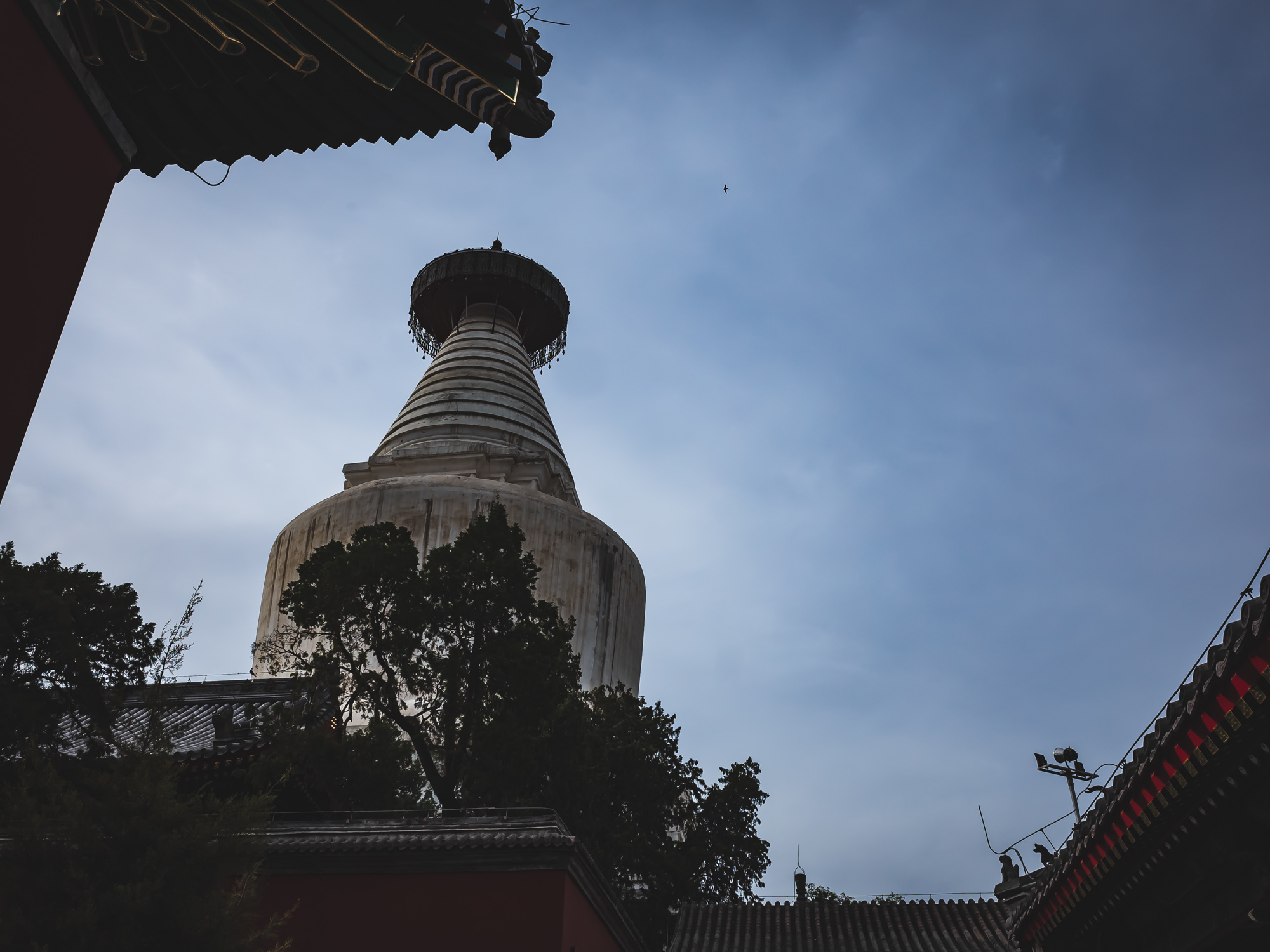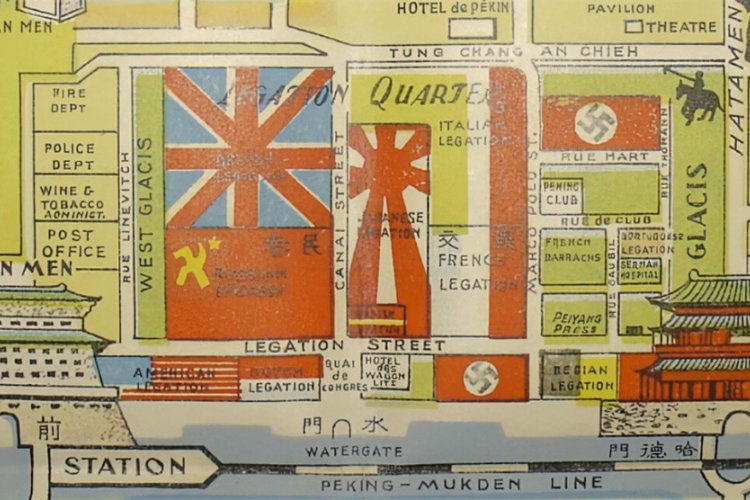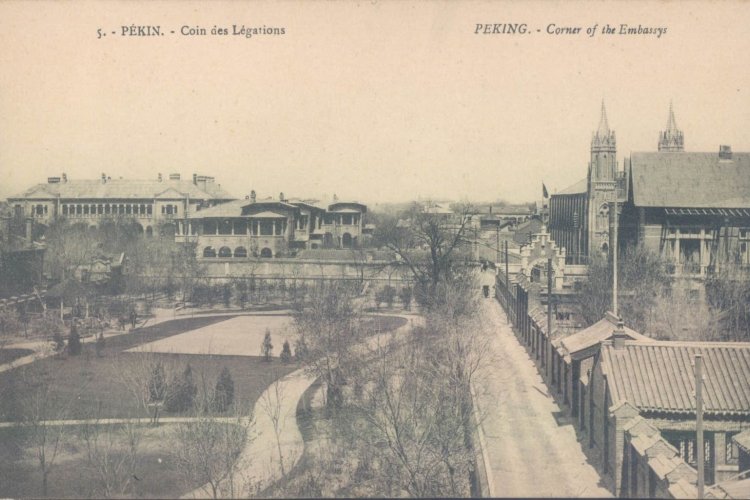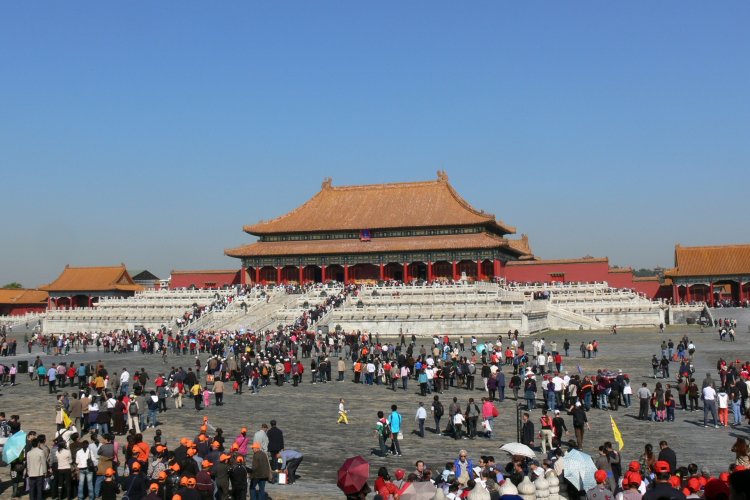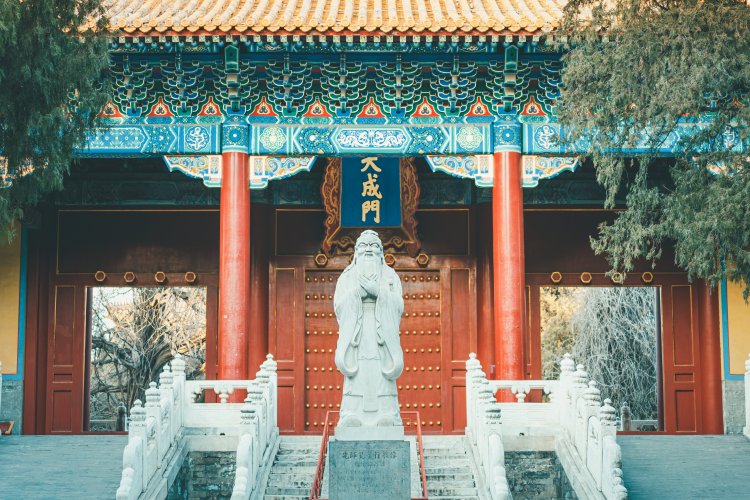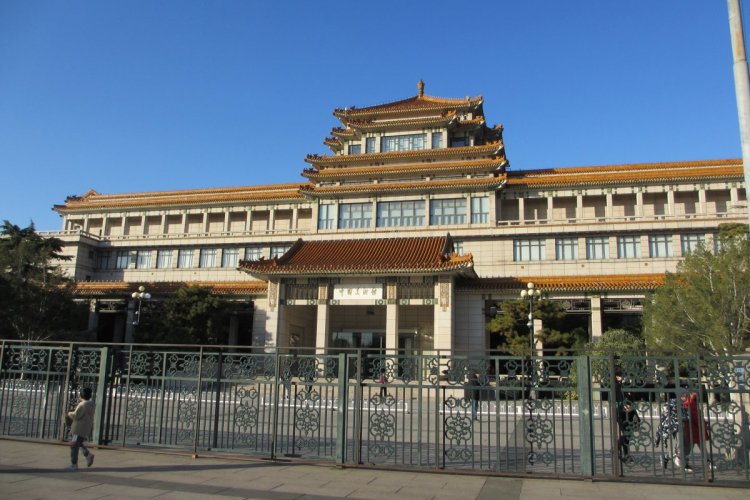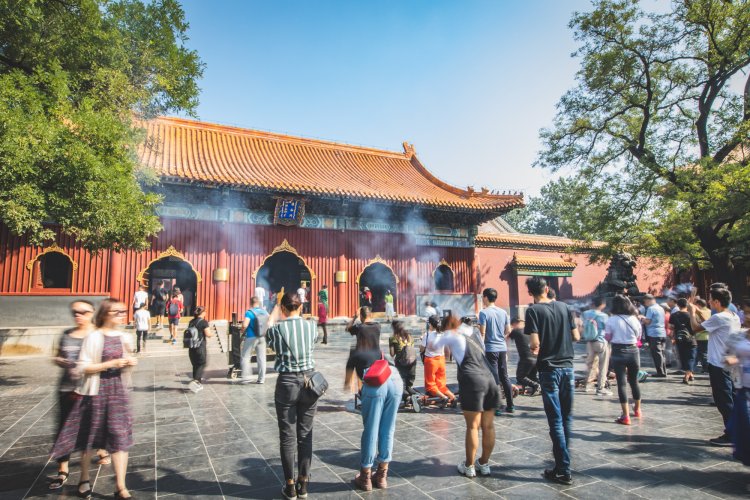Weekend Walk: Exploring the Two Towers of Xicheng
While most Beijing residents are acquainted with Chaoyang, Dongcheng, and Haidian Districts, Xicheng has remained a little off the beaten path. The old neighborhoods west of the Forbidden City and Houhai might not have the cafe cool of Gulou or the modern charms of Sanlitun, but it is an area rich in history and culture. Back streets and alleys still feature the shops and streetside food stalls of an earlier era in the capital’s past (by which we mean pre-2015), and there is no shortage of temples and parks to explore.
Start Here: Fuchengmen Metro Stop (Line 2) and Fuchengmen Nei Dajie
Depart from Fuchengmen Subway Station via Exit B and head east on Fuchengmen Nei Dajie (Fuchengmen Inner Street). If you skipped a meal, there are several excellent roadside restaurants and street stalls selling traditional Beijing snacks including 糖火烧 Tang Huoshao and 肉饼 Roubing. Many of these mom-and-pop snack shops have been rolled up by urban renewal in Dongcheng and Chaoyang. It’s nice to have a spot to stroll and sample a few of the greatest hits of city street food.
Lu Xun Memorial and Museum
The next stop along Fuchengmen Nei is the Lu Xun Memorial and Museum. Lu Xun is one of the most famous writers in Chinese history, and his stories were sarcastic, satirical, and often bitterly funny. He also had one of the great mustaches in Chinese history…think 1970s American Pornstar Stache, and you get the idea.

Baita Si (白塔寺)White Temple Tower (also known as 妙应寺 Miaoying Temple)
Heading east from the Lu Xun Museum, you will see the first of the two towers. The white tower is a stupa constructed in the 13th century when today’s Beijing was the Mongolian capital of Khanbaliq ruled by Kublai Khan and his lot. Kublai’s tower replaced an even earlier structure on the same site. The White Stupa Temple buildings, which surround the tower, are mainly from the Ming Dynasty (1368-1644) with several renovations over the centuries, most recently in 2010.

Temple of the Ancient Monarchs (历代帝王庙)
Continuing our temple trek, a few hundred meters east of the White Tower is the Temple of the Ancient Monarchs. The emperors of the Ming and Qing venerated their own ancestors at various spaces around the capital, including the Ancestral Temple just to the southeast of the Forbidden City. However, the Temple of the Ancient Monarchs was where the emperors could pay their respects to the monarchs of dynasties past. The original complex was built in the mid-16th century.

Guangji Temple (广济寺)
Finally, completing the temple trifecta is Guangji Temple, one of Beijing’s most famous religious sites. The predecessors to the current buildings date from the Jin period (1115-1234), but most of what you see today is from the Ming (1368-1644) and Qing (1644-1912) eras. In the second courtyard is a two-meter tall bronze vessel cast with the eight treasures of Buddhism that is over 200 years old.

Geological Museum of China
Across the street from Guangji Temple sit the modern buildings housing the Geological Museum of China. The massive complex is also home to the Ministry of Natural Resources and the National Oceanic Administration. The museum’s attraction will be in proportion to your interest in rocks and/or dinosaur fossils. If you haven’t already, be sure to check out Simon Cockerell’s project to visit every museum in Beijing. Simon is the GM of Koryo Tours, and he has been posting excellent reviews of the city’s museums, including the Geological Museum and the Lu Xun Memorial and Museum, on their site.

1901 Cafe
Continuing straight ahead for a long block after the Geology Museum and the Guangji Temple, you will come to a T-Crossing where Xisi Dongdajie meets Xihuangchenggen Beijie. Take a right, and head south on Xihuangchenggen Beijie until you reach the intersection with Xi’anmen Dajie and turn left. Heading east on Xi’anmen Dajie, you will see a Western-style villa on the north side of the street. This is a former ecclesiastical property attached to the nearby Church of the Savior. For many years, 1901 Cafe has operated inside the villa, and it’s a wonderful space to grab a warm beverage and relax before continuing your journey.
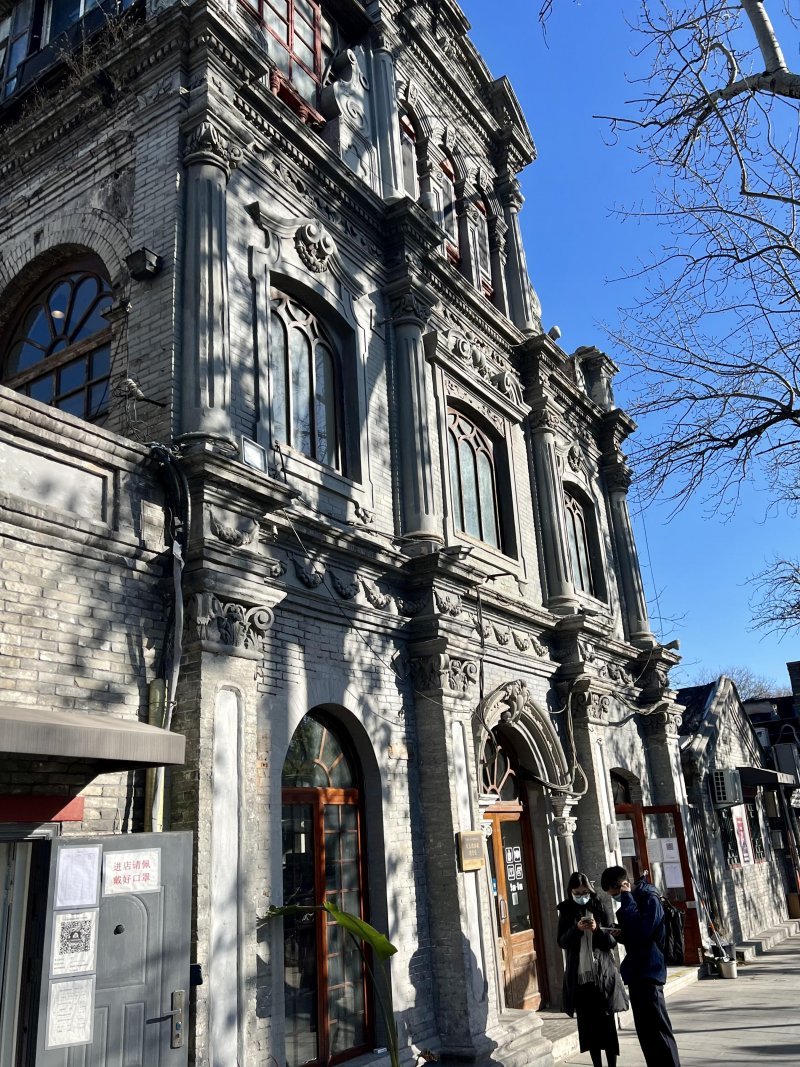
Church of the Savior (North Cathedral 北堂)
The front gate of the Church of the Savior is just a short walk beyond the 1901 Cafe. You may need to walk north along the narrow road to get a good glimpse of the cathedral, better known as North Church. The original church was built in a different location in 1703 on land given to the Jesuits by the Kangxi Emperor (r. 1661-1722). In 1864, a new church was built in the old location with towering gothic spires that peaked over the walls of the nearby imperial gardens. After some negotiations between the French Lazarist missionaries at the church and the Qing government, a new cathedral was built at this current location in 1887. From June to August in 1900, 80 Europeans and more than 3,000 Chinese Christians took refuge here during the Boxer Rebellion.

Ancient Books Division of the National Library
Continuing east, Xi’anmen Dajie becomes Wenjin Road as it crosses between the Zhongnanhai Compound (you may know the famous resident there who values his privacy) on the south side of the street and Beihai Park. The Ancient Books Division of the China National Library is just before the bridge. This complex, built in 1931, served as the main branch of the National Library before moving to its current location in Haidian District.

South Gate of Beihai Park/Round City (团城)
On the opposite side of the bridge, we come to the south gate of Beihai Park. While the buildings in the park today are primarily from the 17th and 18th centuries, the gardens here began in the 11th century when it was used as a “Summer Palace” by the emperors of the Jin Empire. On the park’s southern edge is the “Round City,” part of the Jin-era gardens. Inside the park and across the bridge from the Round City is Qionghua Island, capped by the second (and more famous) of the white towers on this walk.

The White Dagoba of Yong'an Temple (永安寺白塔) and Qionghua Island (琼华岛)
The White Dagoba, as it is known in Western scholarship, was built in 1651 to commemorate a visit to the Qing court in Beijing by the Fifth Dalai Lama. Before there was a 500-meter tall monument to overcompensation, i.e., The Citic “China Zun” Tower, people living in Beijing would use the top of the White Dagoba for navigation purposes, although the foreign community, known for their dickish and unfair descriptions of famous Beijing landmarks, referred to the Beihai tower as “The Peppermint Bottle.”
You can walk up and over (or around) the tall hill on Qionghua Island. One of the best approaches is from the north, entering the gates of the Yongan Temple and proceeding up the stairs to each of the temple’s halls. Think of it as a slow slog upwards toward enlightenment.

Hao Pu Jian (濠濮间)
On the island’s eastern shore is a bridge that takes you back to the mainland. Walking north from the bridge to the east bank of Beihai is a wonderful experience at any time of year. There’s always something happening in the park. There is a slightly hidden gap between the rocks and small hills along the lakeshore if you can find it. One of these gaps leads to the Haopu Jian – aka The Hao and Pu Garden. This lovely respite from the bustling lakeshore was a place for the emperors and other members of the court to relax and watch fish. The name of the space is taken from a story about the Daoist philosopher Zhuangzi speculating on the mental health of the fish in the Hao River.

Altar of Silkworms (先蚕坛)
Returning lakeside and continuing north to the gate of Beihai Park, you will pass a large temple closed to the general public. This is the Altar of the Silkworm, one of many imperial sites in Beijing for rituals related to agriculture. Unlike most other altars in the capital, the rituals here were done by the women of the court rather than the emperor. In the 1950s and 60s, it was reportedly used as a school for the children of the leaders living in nearby Zhongnanhai. Today it is a kindergarten.
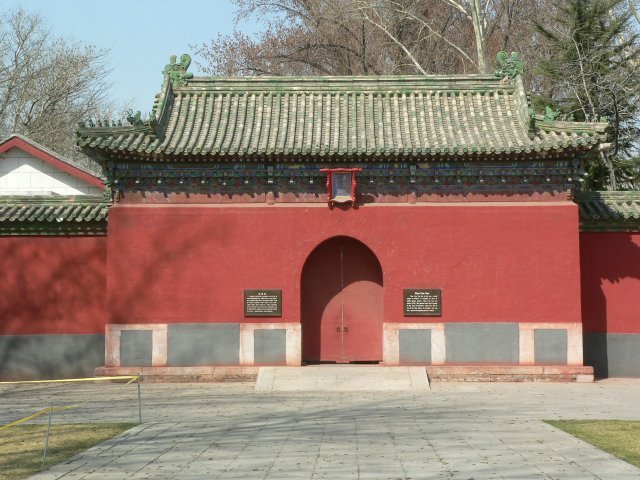
End Here: North Gate of Beihai Park/Beihai Metro Stop (Line 6)
Exiting the North Gate of Beihai will take you to the end of our walk and the Beihai Metro Station (Line 6).

Know Before You Go
Almost all of the sites in this article are open to the public, but be aware that access will involve scanning QR codes and registering before being allowed inside. The security guards and ticket windows are generally pretty helpful when it comes to entrance policy, but experiences may vary depending on conditions in the city and the blood sugar levels of the staff.
Selected English Language Sources and Further Reading
Aldrich, M. A. (2008). The search for a vanishing Beijing: A guide to China’s capital through the ages. Hong Kong: Hong Kong University Press.
Arlington, L. C., & Lewisohn, W. (2015). In search of old Peking. Vancouver, British Columbia: Soul Care Publishing, 2015. (Originally published: Peking, H. Vetch, 1935)
Cohn, D., & Zhang, J. (2013). Beijing Walks. New York: Henry Holt and Company.
Li, L. M., Dray-Novey, A. J., & Kong, H. (2008). Beijing: From imperial capital to Olympic city. New York, NY: Palgrave Macmillan.
Lovell, J., & Li, Y. (2010). The Real Story of Ah-Q and Other Tales of China: The Complete Fiction of Lu Xun. New York: Penguin Classics
Naquin, S. (2008). Peking: Temples and city life, 1400-1900. Berkeley: University of California Press.
About the Author
Jeremiah Jenne earned his Ph.D. in Chinese history from the University of California, Davis, and taught Late Imperial and Modern China for over 15 years. He has lived in Beijing for nearly two decades and is the proprietor of Beijing by Foot and organizes history education programs and walking tours of the city which are deeper dives into the route and sites described here.
READ: Weekend Walk: See Beijing's Past, Present & Future with this Chang'an Jie Stroll
Images: Uni You, Jeremiah Jenne

